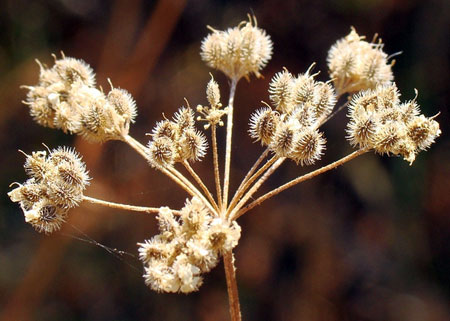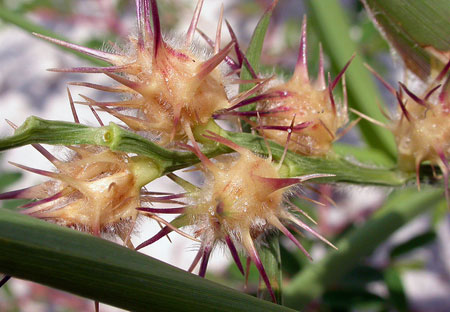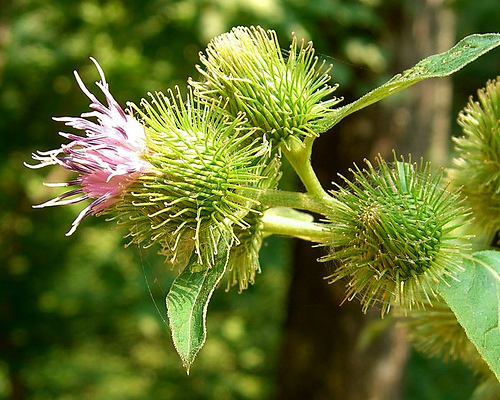The weedy-seedy plants of fall
Three of Michigan’s most annoying weeds that produce seeds are hedge parsley, sandbur and common burdock.
Every fall, hikers, walkers and gardeners – anyone who spends much time outside – run into a similar dilemma. They look down at their pant legs and they are covered with seeds that do not brush off. Or, they bump their head into some weed that is loaded with seeds and those weed seeds become hopelessly entangled in their hair. And there’s not just one seed, but hundreds.
Not only are there loads of seeds sticking tightly, they will not come loose. Sometimes, it’s faithful Fido who is coated after a romp in the great outdoors. To add injury to insult, one of these plant’s burs can cause painful injuries if it becomes embedded in skin.
Some of these plants are biennial, taking two years to complete their life cycle. The first year they are a small plant with no flowers or seeds, and the next year they grow much larger and produce flowers and seeds, and then their life is over.
Several weedy-seedy plants that make the “Very Annoying List” for all seed pickers are hedge parsley, sandbur and common burdock.
Hedge parsley or spreading hedge parsley
For many parts of Michigan, this appears to be a new weed or one that is seen more frequently in the last several years. This biennial plant grows in both sun and shade and can grow to over 5 feet tall. The leaves are a rich, shiny green and look slightly like flat-leaf parsley.
Plants produce small, white flowers like tiny Queen Ann’s Lace on the upper part of the plant. The seeds are extremely annoying and produced in wild profusion by August and later. The seeds are very small and have rows of mini-hooks on them that secure them to every passing form of life. In hair, they become matted clumps. On clothes, they cling tenaciously. Luckily, they do not stick to canvas or denim well.

Hedge parsley. Photo credit: Valter Jacinto, Flickr.com
Sandbur
This weed is an annual, yellow-green, spreading annual grass that is mostly erect, but can occasionally form mats. It thrives in dry, sandy soils and this is how it got its name. The seeds are contained in a bur that has extremely sharp spines. Each seedhead has multiple burs. Because the spines on the burs are so long and sharp, they can cause a great deal of pain if contact is made.

Sandbur. Photo credit: Matt Lavin, Flickr.com
Common burdock
This biennial produces thistle-like burs on a plant that can range in size between 3 and 5 feet tall. The bristly bracts are hooked and form a round seed head below a small tuft of lavender florets. Burdock burs were the inspiration for the invention of Velcro.
Removal of seeds can be a monumental task. There are a number of techniques to try to remove the seeds, but wearing gloves may help protect your fingers while doing this. Tools that might work with various seeds are lint rollers, sticky tape or duct tape, fine tooth comb and a disposable razor. If hair or pets with hair are involved, massage in vegetable oil, comb gently and then wash. Pet “de-shedding” tools or scissors are recommended on pets.



 Print
Print Email
Email
